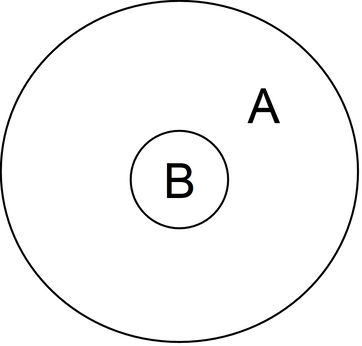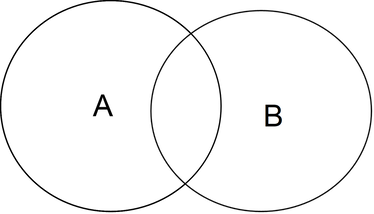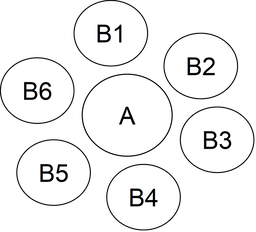|
reedom to operate or right-to-use is critical to a business. If someone else possesses patents that restrict your company’s right to make or use a product, your company has a significant risk. For that reason, freedom to operate analyses are often performed, preferably by a patent attorney. Freedom to operate can be examined at any time, but it is best to identify issues early on so, if necessary, product design changes can be made to eliminate or reduce the potential for liability. A time when at least a preliminary review of freedom to operate should be performed is when a patentability determination is made for new innovations. An analysis can determine whether the innovation is patentable as well as whether there are infringement risks or not. Of course, there are also other times when freedom to operate is examined. These may include simply becoming aware of a competitor’s patent or pending application, when concerns are expressed by a customer, or when moving into a new product area. Once we can identify potential infringement risks, we can assist in developing and implementing appropriate strategies to address these risks. One strategy may simply be acquiring a license if a license is available. Other strategies may include designing around or strategic patenting. Designing around and strategic patenting "Designing around" and "strategic patenting" are sometimes used interchangeably, but there are differences. Designing around refers to modifying a product or process to avoid infringement of someone else's patent. Sometimes one can protect the modifications with their own patent or patents. Strategic patenting, on the other hand, does not require the context of a particular product or process, but looks at existing patents and identifies improvements, changes, and patentable ideas of value in view of the existing patents. Here are some possible characteristics of strategic patenting:
Sometimes using Venn diagrams provide some insight into the relationships that are helpful in strategic patenting.  To the left is one possible scenario. Where invention A is pre-existing, one can potentially patent invention B, which falls wholly within the scope defined by invention A, if invention B is patentable (i.e. novel and non-obvious) relative to A and other prior art. Since invention B falls wholly within the scope of A, invention B could not be practiced without infringing the patent for invention A. Invention A could be practiced without infringing the patent for invention B. Therefore, for the owner of B to gain advantage over A, invention B would need to be something that the owner of A would find of interest. This would be one instance where a patent may have narrow scope, but if its limitations are critical, the patent for invention B would have value. This example also emphasizes the point that strategic patenting is different from designing around. The owner of the patent for invention B does not have a right to practice their invention, thus, this scenario is no help for design around purposes, but it may still provide a benefit to the owner of the patent for invention B.
If you have freedom-to-operate questions or patent strategy questions, contact your GCO attorney or contact [email protected].
What’s an Invention? People often use the term “invention” synonymously with “a potentially patent protectable invention.” The fresh-faced engineer or scientist right out of school is often amazed at how little an invention is. The marketing executive may be surprised at how much an invention is. These differing initial perspectives are instructive in understanding what is required for there to be an invention. The uninitiated scientist or engineer tends to think of an invention in grandiose terms as something that is revolutionary or has tremendous impact—inventions on par with the transistor or the laser. The truth is that inventions are typically incremental in nature, being improvements to existing products or processes. Inventions are often merely new features on existing products, changes in manufacturing processes that may reduce time or cost of manufacturing, or other types of innovations. Such inventions are still important and patent protection potentially valuable. Thus, oftentimes the new scientist or engineer will fail to recognize they have invented something new! The marketing executive, on the other hand, may consider every product to be new, novel, like nothing before, and therefore be something potentially protectable by a patent. The marketing executive might know that if a product is patented or at least patent pending, it may be easier to market. Although a product or service may indeed be new, that does not automatically entitle it to patent protection. Therefore, just because a product is “new” for marketing purposes, that does not make the product a potentially patent protectable invention. Innovations implemented using technology in one form or another may be patentable inventions. Nevertheless, not all innovations are protectable by patents, and some innovations might be better protected in other ways such as by trade secrets, copyrights, trademarks, or by contract. In some instances, innovations could be simultaneously protected using more than one different type of intellectual property protection. So how do I invent? One way to cultivate innovation is through an invention session, which is essentially a brainstorming session to develop new inventions. The invention session can serve a number of different purposes depending upon its specific focus. These purposes may include addressing problems, determining how to take advantage of opportunities, or other strategic purposes. The makeup of who is at the session can also vary according to the session’s objectives. Individuals who may typically be at such sessions include those closest to technical problems being addressed, those who have an understanding of where the corporation and the industry is going in the future, those most attuned to customers’ present and future needs, as well as those who are creative problem solvers. If outside technical consultants are used, arrangements regarding ownership of any intellectual property should be made in advance. Having a patent attorney there to help capture the potentially patentable ideas is often helpful. If not, someone needs to capture the ideas discussed in as complete detail as possible. The goal of the session is usually to identify innovations of value which are potentially patentable. We will walk through the basic process for invention with emphasis on two important concepts. The first is to expand perspective so as to look sufficiently far into the future. The second is to be educated about new technologies, which can be very helpful to the process. The Invention Process There are numerous approaches to inventing. The context in which invention is made may help in selecting the best approach. One simple approach is set forth below which may be applied to strategic patenting. It consists of the following basic steps: · Identify a problem or set of problems · Determine a feature set that solves the problem · Translate the feature set into an arrangement of structural elements or method steps Identify a problem or set of problems To create an invention, one logical place to start is by identifying and understanding the problems that need solved. Oftentimes the invention itself is more about identifying and understanding the problem than using any special skill or technological knowledge to solve the problem. When engaged in strategic patenting in response to someone else's patent portfolio, the problems may be problems not identified, addressed, or adequately solved by their inventions. It is useful to identify problems specifically, or else to identify multiple problems to be solved. Some thoughts to consider when identifying the problems:
Inventing into the future When inventing into the future, consider that tomorrow's problems may not be today's problems, and today's problems may not be tomorrow's problems. Inventing for tomorrow may include predicting changes in the industry and identifying the problems which will be experienced based on those predictions. Knowing today's problems may not be tomorrow's problems can make invention easier. Thus, one can remove some of today's constraints in determining the feature set if there is the possibility that such constraints may not present the same type of obstacles in the future. Examples of such constraints may include:
Determine a feature set that solves the problem(s) Based on one’s research or knowledge, one can make a list of features for a product or service. At this point one does not need to be concerned with how the features will be implemented, only what the features are. One can state the features either positively or negatively. The feature set should include features that solve the problem or problems of interest as well as other features that may be necessary or desirable. The list of features can include general features as well as specific features and ideally has some of both. There is no limit to the number of potential features that may be important to a particular invention. Translate the feature set into an arrangement of structural elements or method steps Next, one should translate the feature set into an arrangement of structural elements or method steps that embody the feature set. Typically, the more specific the problem(s) and the more specific the features defined, the easier this step will be. New technologies Sometimes the translation of the feature set into structural elements or method steps involves applying new technologies. When educated about new technologies, a number of additional possible solutions will be at one’s disposal. Oftentimes new materials, new processes, or new electronics can lead to new solutions. New technologies often have a cascade effect. A new product or device can result in the possibility of dozens or hundreds of new inventions. Some of the technologies which have resulted in numerous inventions in recent years include:
Therefore, knowing about the availability of new technologies can be helpful in the inventing process. New technologies may serve as enabling technologies for an invention if one considers how such technologies can be applied to one’s particular problems. If your business can benefit from having a GCO attorney help facilitate an invention brainstorming session to capture innovative ideas that may be patentable, please reach out to your GCO attorney or to [email protected] |
Postings provided here are provided by GCO attorneys or friends of GCO. If you have written a relevant blog post which you want published here, please contact [email protected]. ArchivesCategories |


 RSS Feed
RSS Feed